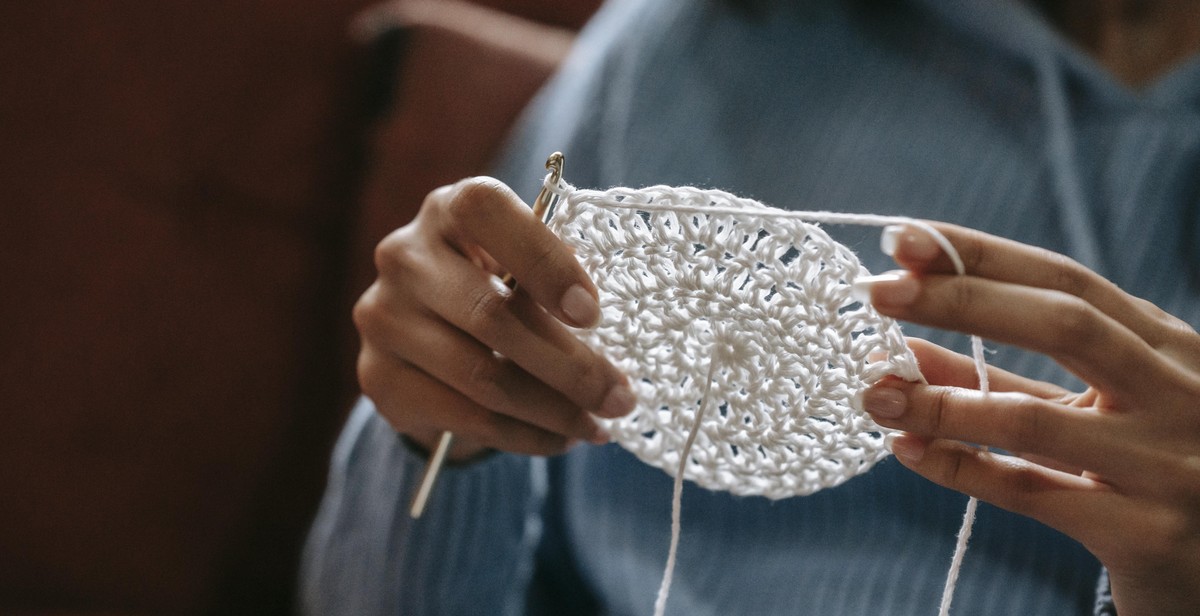How to Knit a Cozy Blanket for Winter
Winter is a time for snuggling up with a warm blanket and a hot cup of cocoa. What better way to stay cozy this winter than by knitting your own blanket? Not only is it a fun and relaxing activity, but it also allows you to customize your blanket to your exact liking. Knitting a cozy blanket for winter is a great way to stay warm and add a personal touch to your home decor.
Why Knit a Blanket for Winter?
Knitting a cozy blanket for winter has numerous benefits. Firstly, it is a great way to stay warm during the colder months. Blankets made from wool or other warm materials can provide insulation and keep you snug and comfortable. Secondly, knitting a blanket is a fun and engaging activity that can help reduce stress and anxiety. It is a great way to unwind after a long day or week. Thirdly, knitting your own blanket allows you to customize it to your liking. You can choose the color, pattern, and texture of the yarn to create a blanket that is truly unique and reflective of your personal style.
So, if you’re looking for a fun and practical way to stay warm this winter, why not try knitting your own cozy blanket? With a little bit of patience and creativity, you can create a beautiful and functional piece of home decor that you can enjoy for years to come.

Choosing the Right Yarn
When it comes to knitting a cozy blanket for winter, choosing the right yarn is crucial. The right yarn can make all the difference in the final product. Here are some factors to consider when choosing the right yarn for your project:
Consider the Fiber Content
The fiber content of the yarn will affect the look, feel, and durability of your blanket. Some popular fiber options for blankets include:
- Wool: Wool is a popular option for blankets because it is warm, durable, and comes in a variety of textures and weights.
- Cotton: Cotton is a breathable option that is great for warmer climates. It is also machine washable and easy to care for.
- Acrylic: Acrylic yarn is a budget-friendly option that is easy to find in a variety of colors and textures. It is also machine washable and great for people with wool allergies.
- Alpaca: Alpaca yarn is soft, warm, and hypoallergenic. It is a great option for people with sensitive skin.
Choose the Right Weight
The weight of the yarn will affect the thickness and warmth of your blanket. Here are some common yarn weights and their recommended uses:
| Yarn Weight | Recommended Use |
|---|---|
| Lace | Delicate shawls and scarves |
| Fingering | Socks, lightweight garments |
| Sport | Baby clothes, lightweight sweaters |
| Worsted | Blankets, scarves, hats |
| Bulky | Heavyweight blankets, hats, and scarves |
Choosing the right yarn for your project may take some time and research, but the end result will be worth it. Consider the fiber content and weight of the yarn to ensure that your blanket is warm, cozy, and durable.

Selecting Needles
Selecting the right needles for your knitting project is crucial to ensure that you achieve the desired result. There are various types of needles available, and choosing the right one depends on the type of yarn you are using and your knitting style.
Types of Needles
There are two main types of knitting needles: straight needles and circular needles. Straight needles are the traditional type and come in pairs. They are ideal for knitting flat pieces such as scarves and blankets. Circular needles, on the other hand, have two needle tips connected by a flexible cable. They are great for knitting in the round and for larger projects such as sweaters and blankets.
Another factor to consider when choosing needles is the material they are made from. Common materials include bamboo, aluminum, and plastic. Bamboo needles are lightweight and have a smooth surface that prevents yarn from slipping. Aluminum needles are durable and come in a variety of colors and sizes. Plastic needles are affordable and come in bright colors, making them easy to spot.
Choosing the Right Size
Choosing the right needle size is also important for achieving the desired gauge and tension. The size of the needle you choose depends on the weight of the yarn you are using. The thicker the yarn, the larger the needle size you will need. Most yarn labels recommend a range of needle sizes to use.
It’s important to note that everyone’s knitting tension is different, so you may need to adjust your needle size to achieve the correct gauge. If your stitches are too loose, try using a smaller needle size. If your stitches are too tight, try using a larger needle size.
| Yarn Weight | Recommended Needle Size |
|---|---|
| Fingering | US 1-3 |
| Sport | US 3-5 |
| DK | US 5-7 |
| Worsted | US 7-9 |
| Bulky | US 9-11 |
| Super Bulky | US 13-17 |
By selecting the right needles for your knitting project, you can ensure that your finished product is of the highest quality. Take the time to choose the right size and type of needle, and you’ll be on your way to creating a cozy blanket for winter!

Casting On
Before you can start knitting your cozy winter blanket, you need to cast on. Casting on is the process of creating the first row of stitches on your knitting needle. There are several different methods for casting on, but we will be focusing on two: the slip knot method and the long-tail cast on method.
Making a Slip Knot
The slip knot is a simple and easy way to cast on your first stitch. Here’s how to do it:
- Start by making a loop with your yarn, leaving a tail of about 6 inches.
- Take the tail end of the yarn and place it over the loop.
- Insert your knitting needle under the loop and grab the tail end of the yarn.
- Pull the tail end through the loop, creating a new loop on your knitting needle.
- Slide the loop up to the top of the needle, making sure it’s not too tight or too loose.
Repeat this process until you have the desired number of stitches on your needle.
Long-Tail Cast On
The long-tail cast on method creates a stretchy and sturdy edge that’s perfect for blankets. Here’s how to do it:
- Start by making a slipknot about 6 inches from the end of your yarn.
- Hold the slipknot in your left hand and the working yarn in your right hand.
- Place your thumb and index finger of your left hand between the two strands of yarn, with the slipknot on your thumb and the working yarn on your index finger.
- With your right hand, bring the needle under the strand on your thumb, over the strand on your index finger, and back under the strand on your thumb.
- Bring the needle up and over the strand on your index finger and back down through the loop on your thumb.
- Slide the loop off your thumb and tighten the stitch on your needle.
- Repeat this process until you have the desired number of stitches on your needle.
Now that you’ve successfully cast on your stitches, you’re ready to start knitting your cozy winter blanket!

Knitting the Blanket
Now that you have all the necessary materials and have familiarized yourself with the basic knitting stitch, it’s time to start knitting your cozy blanket for winter. Here’s how:
Step 1: Cast On
To begin, cast on the number of stitches required for your blanket. This will depend on the size of your blanket and the thickness of your yarn. A good rule of thumb is to cast on 100-150 stitches for a lap blanket and 200-250 stitches for a full-sized blanket.
Step 2: Knit the Rows
Once you have cast on, start knitting the rows using the basic knitting stitch. Remember to keep your tension consistent and to knit loosely to avoid a tight, stiff blanket.
Step 3: Changing Colors
If you want to add some color to your blanket, you can easily do so by changing yarn colors. To change colors, simply knit to the point where you want to switch colors, then drop the old yarn and pick up the new one. Tie a small knot to secure the new yarn and continue knitting.
Step 4: Adding Rows
Continue knitting rows until you have reached your desired length. Don’t worry if your blanket looks a little wonky at first – it will even out once you’ve added more rows.
Step 5: Bind Off
Once you have reached your desired length, it’s time to bind off. This will ensure that your stitches don’t unravel. To bind off, knit the first two stitches, then use your left-hand needle to pull the first stitch over the second stitch and off the right-hand needle. Knit the next stitch and repeat the process until you have one stitch left. Cut the yarn, leaving a tail, and pull it through the final stitch.
And there you have it – your very own cozy knitted blanket for winter!

Finishing the Blanket
Binding Off
Once you have completed knitting your cozy blanket, it’s time to bind off. Binding off is the process of securing the last row of stitches so that they don’t unravel. There are different methods of binding off, but the simplest one is the basic bind off.
- Knit the first two stitches of the last row.
- Insert the left needle into the first stitch on the right needle and lift it over the second stitch and off the needle.
- Knit the next stitch on the right needle.
- Repeat steps 2 and 3 until you have one stitch left on the right needle.
- Cut the yarn leaving a tail of about 6 inches and pull it through the last stitch to secure it.
Weaving in Ends
After binding off, you will have some loose ends of yarn that need to be woven in. Weaving in ends is the process of hiding the yarn tails in the stitches of the blanket so that they are not visible and don’t come undone.
- Thread the yarn tail onto a tapestry needle.
- Insert the needle under several stitches on the wrong side of the blanket.
- Bring the needle back up and insert it under a different set of stitches.
- Repeat step 3 several times, making sure to change direction each time, until the yarn tail is secure.
- Cut the excess yarn close to the blanket.
- Repeat steps 1-5 for all the loose ends.
Once you have finished binding off and weaving in ends, your cozy blanket is ready to use. Enjoy the warmth and comfort it provides during the cold winter days and nights!

Conclusion
Learning how to knit a cozy blanket for winter is a fun and rewarding project that can provide you with a warm and comforting addition to your home décor. By following the steps outlined in this article, you can create a beautiful and functional blanket that will keep you cozy all winter long.
Remember to choose high-quality yarn that is soft and warm, and to use the appropriate size needles for your yarn. Take your time when knitting and be sure to check your gauge to ensure that your blanket is the right size.
When it comes to selecting a pattern, there are many options available, from simple garter stitch to more complex cable patterns. Choose a pattern that you feel comfortable with and that suits your aesthetic preferences.
Once you have finished knitting your blanket, be sure to weave in any loose ends and block your blanket to ensure that it retains its shape and looks its best. With a little bit of care and attention, your blanket will be a cherished item for years to come.
- Choose high-quality yarn
- Use appropriate size needles
- Select a pattern that suits your preferences
- Weave in loose ends and block your blanket
Whether you’re a seasoned knitter or a beginner, knitting a cozy blanket for winter is a fun and rewarding project that can provide you with a warm and comforting addition to your home décor. So grab your needles and yarn and get started today!
